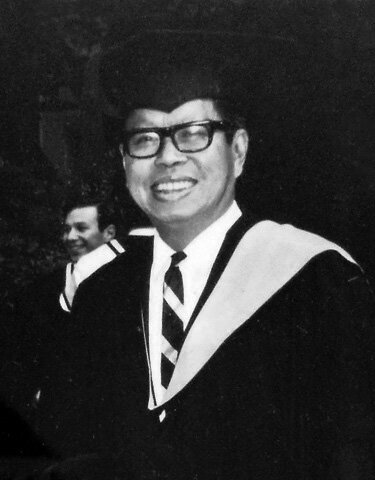Eu Jin Seow
Portrait of Eu Jin Seow. (Source: geni.com).
Dr. Eu Jin Seow (1920 — 1993) was a pioneer architect and architectural historian of Singapore.
As with almost all pioneer architects who studied overseas, Seow came from a prominent family. His mother Tan Poh Li was Tan Tock Seng’s great-great granddaughter, and his father Seow Poh Leng was the General Manager of Ho Hong Bank, which later merged with two other banks to become Overseas-Chinese Banking Corporation.
Seow studied architecture at the University of Melbourne and graduated in 1945. Between 1946 and 1948, he studied urban history at the Courtauld Institute. He returned to the region in 1948 and worked with Booty and Edwards in Kuala Lumpur for two years. In 1951, Seow came back to Singapore and started his own firm E J Seow, which later became E J Seow Associates and then, Seow, Lee and Heah. The partners for the latter were Lee Gee Koon and Heah Hock Heng. Seow’s better known built works included the Boy Scouts Headquarters and the Shangri-la Hotel.
Seow joined the then School of Architecture at the National University of Singapore (NUS) in 1974 as Chair and Professor, a position he held till his retirement in 1980. The year before he joined NUS, Seow completed his PhD thesis at the University of Melbourne “Architectural Development in Singapore”, which still stands as the first of a handful of doctoral research done on the architectural history of Singapore.
Besides NUS, Seow has also served in many statutory bodies, including the Board of Governors of the Singapore Polytechnic, the Board of Architects, and the Preservation Board of Monuments. Lee Kip Lin, an architect and historian of Seow’s generation, describes him as the “doyen of the architectural profession. Like his father, he possessed remarkable wit. When told by a young architect graduate who had just returned from U.S.A. that he worked for Pei, E.J. laughed and said, “so do we!”¹”
Eu Jin Seow (third row, second from the right) and Lim Chong Keat (second row, third from the right) at the Conference of Commonwealth and Overseas Architectural Societies (Source: Robert Gardner-Medwin’s papers at University of Liverpool).
Eu Jin Seow (man wearing a tie facing the camera) during Robert Matthew’s visit to Singapore Polytechnic, c. 1962 (Source: Tay Kheng Soon’s Collection).
¹ The joke is that “Pei” sounds like “pay”, thus “I worked for Pei” sounded like “I worked for pay.” This incident was also told to the author by Tay Kheng Soon. Kip Lin Lee, Emerald Hill: The Story of a Street in Words and Pictures (Singapore: National Museum Singapore, 1984), 23.
Written by Chang Jiat Hwee based on the oral history interviews with Seow conducted by the Oral History Centre of the National Archives of Singapore.




